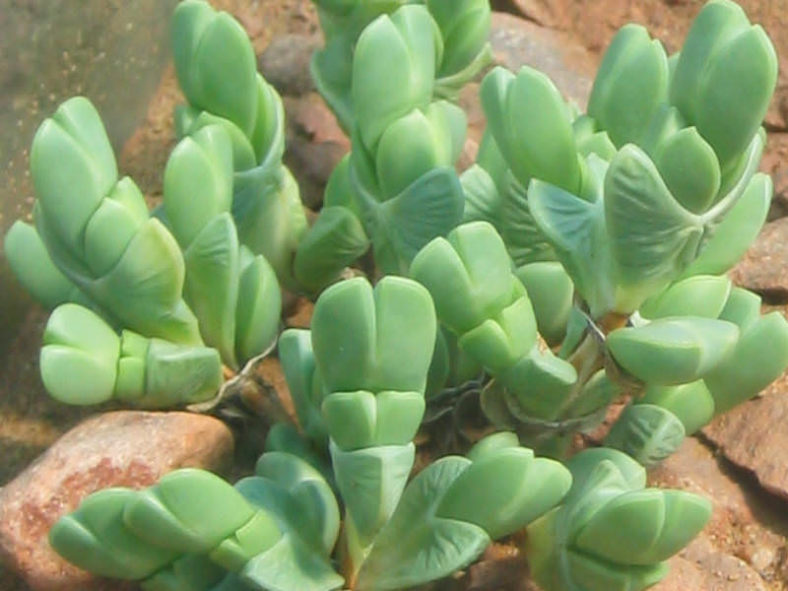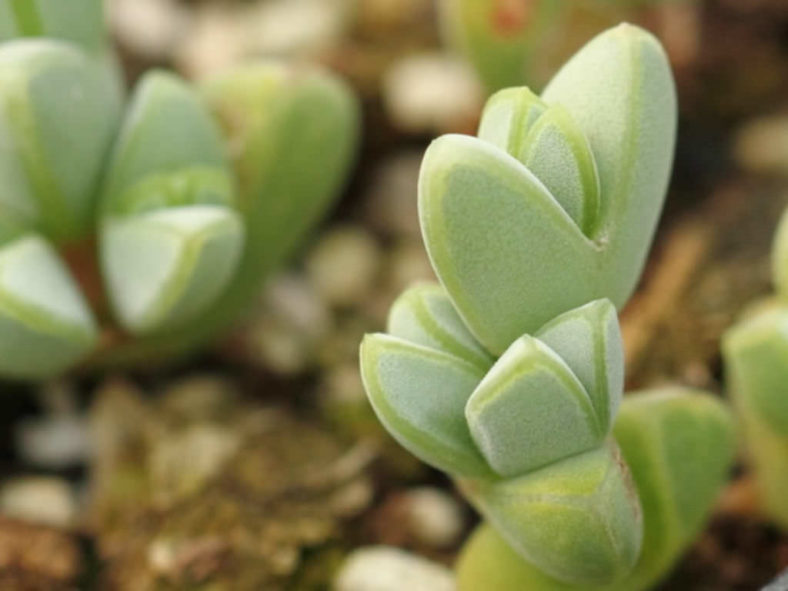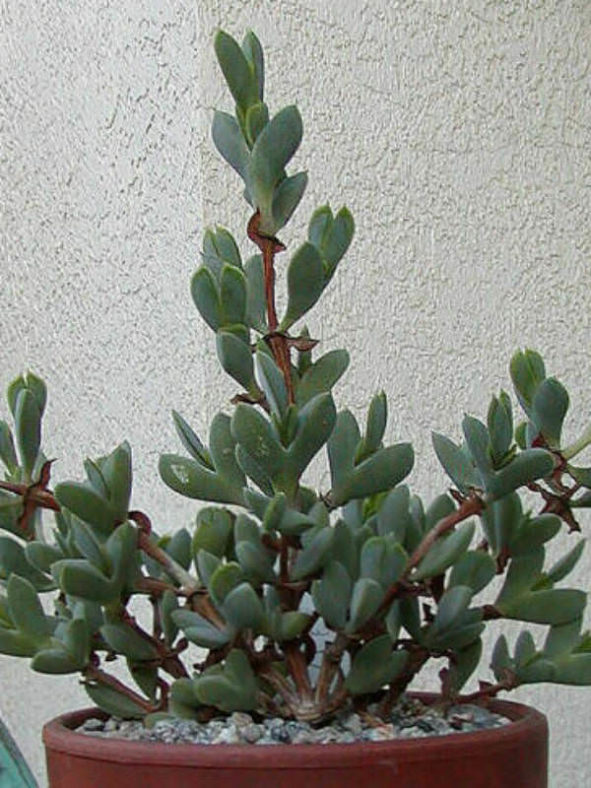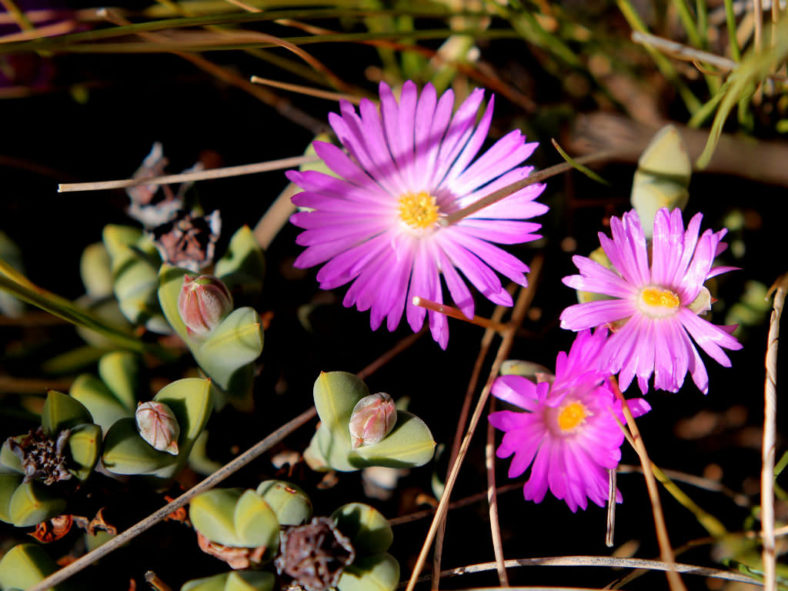Scientific Name
Braunsia apiculata (Kensit) L.Bolus
Common Name(s)
Ice Plant
Synonym(s)
Mesembryanthemum apiculatum, Echinus apiculatus
Scientific Classification
Family: Aizoaceae
Subfamily: Ruschioideae
Tribe: Ruschieae
Genus: Braunsia
Etymology
The specific epithet "apiculata" (pronounced "uh-pik-yoo-LAY-ta") means "abrupt, short pointed" and refers to the tiny, spiny protrusions at the tip of the leaves.
Origin
This species is native to South Africa (mainly in the Western Cape and slightly into the Northern Cape, from the Cederberg to the Little Karoo). The habitat is sandstone outcrops, among quartzite pebbles or shale, among semi-arid vegetation types, including renosterveld and fynbos.
Description
Braunsia apiculata is a mat-forming succulent with short, woody, erect or prostrate stems and silvery green leaves that grow in pairs, stacking one pair on top of the other. It can grow up to 8 inches (20 cm) tall.
The flowers are pink or magenta and appear in early spring.

Hardiness
USDA hardiness zone 9a to 11b: from 20°F (-6.7°C to 50°F (10°C).
How to Grow and Care
The beautiful flowers, ranging in color from salmon to pink to white, bloom in winter and spring, opening and closing in the afternoon. They do well in cultivation and are, for the most part, not very finicky.
Braunsias are moderately slow-growing succulents. They need moderate water when growing in late fall and early spring. Keep somewhat dry the rest of the time. Like all living rocks, they thrive in porous soils with excellent drainage. It can tolerate high heat and some frost, hardy to 23°F (-5°C) or less if very dry. Braunsias are very rewarding succulents and can be cultivated in a desert garden in warm climates, greenhouses, or windowsills. Enjoy the bright shade in summer and the full sun in the other seasons.
They are easily propagated by seed and cuttings.
See more at How to Grow and Care for Braunsia.
Links
- Back to genus Braunsia
- Succupedia: Browse succulents by Scientific Name, Common Name, Genus, Family, USDA Hardiness Zone, Origin, or cacti by Genus
Photo Gallery
Click on a photo to see a larger version.


